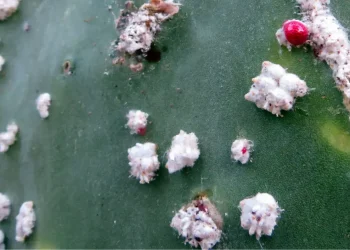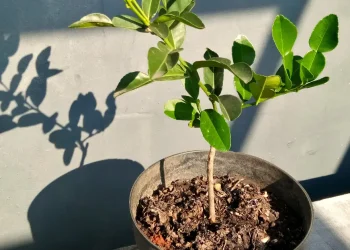Small white eggs can be found in many different places. But soil or composts are the usual target of the insect laying these eggs.
However, don’t jump to conclusions just yet. These tiny white eggs are not always eggs. The things you are seeing on the soil surface can be:
- Insect Eggs
- Fungi
- Perlite or Other Soil Additive
In this article, I will zoom into these white balls on your soil surface, and together, we’ll find out their source.
What are the White Eggs in Soil?
The small white eggs commonly found in the soil might not always be eggs in the literal sense. While some of these tiny white balls signify insect eggs, others could result from fungi or even remnants of perlite and other soil additives.
1. Insect Eggs
I bet that was the first thought that came into your mind – that the white balls are insect eggs. Believe it or not, insects are not the most common culprits. At least not in indoor plants. That’s mainly because many insects lay eggs that are too small to be easily noticeable.
Insect eggs are often laid near the roots of plants. They are typically oval-shaped and range in size from barely visible to a few millimeters.
They can be smooth or slightly textured, depending on the insect species. These eggs can belong to beetles, slugs, or various worms.
If an insect is truly behind these eggs, you should be able to spot other signs of insect activity in the surrounding area, such as holes or chewed leaves.
2. Fungi
Certain types of fungi produce small white structures, often mistaken for eggs.
These fungal bodies can appear as tiny white eggs, often with fuzz or “hairs” around them. Another sign that can give fungi away is that these white orbs will multiply and spread rapidly.
Fungal growth usually occurs in damp conditions. Additionally, fungi tend to appear in rich clusters, whereas insect eggs will be scattered over the soil’s surface.
One common type of fungi that, at the beginning, creates these white eggs is called saprophytic fungi. It’s not a pathogenic or harmful fungus, and it’s likely growing there from spores in the soil mix. If you leave it there, you will end up with mushrooms in your soil in a few weeks.
However, some fungi can cause plant diseases, so I would recommend dealing with them right away.
If the fungus is present only in the soil and has not spread to your plant, pausing watering and cultivating the soil should fix that. Fungi grow in high moisture, and the cultivation part will break down the mycelium.
3. Perlite and Soil Additives
Perlite is one of the most common soil additives. I wouldn’t be afraid to say that you can find perlite in the majority of soil mixes.
Perlite particles are small, lightweight, and white, resembling tiny eggs. When mixed into the soil, perlite can be mistaken for white eggs, especially if they have weathered and become less distinct in shape.
If soil additives are the white spheres you see, you should notice a consistent presence of them throughout the soil.
These “eggs” will lack the specific markings or openings found in genuine insect eggs and won’t have any fuzz or hairs around, as you can find on fungi.
What to do with those Small White Eggs in the Soil?
If you’ve identified the small white orbs in your soil as perlite, there’s no cause for concern. Perlite, a common soil additive, often appears as tiny white eggs, but it is actually very beneficial for your garden.
However, if the white eggs are fungi-related or are insect eggs, swift action is essential.
While many fungi are actually beneficial for the plant, if you are not a mycologist, you won’t be able to tell good fungi and harmful fungi apart. The “bad fungi” can lead to various issues, including plant diseases or eventually dying of the plant.
To deal with fungus, first, reduce moisture levels in the affected area by adjusting your watering routine. Cultivate the soil gently to disrupt the mycelium, which is the vegetative part of the fungus. You can also apply some natural remedies, like neem oil.
If the infestation is bad, don’t hesitate to reach for a fungicide.
This also applies to insect eggs. If you see dozens of white eggs from insects, chances are that they will make their return even when you scoop the eggs away. So don’t be afraid to use an insecticide.
If you own a fish pond, you can feed the insect eggs to your fish. They will love it!
How to Prevent Pests from Laying Eggs in the Soil?
Maintaining a pest-free garden begins with proactive strategies to deter insects from laying eggs in the soil.
First and foremost, practice good garden hygiene by regularly removing fallen leaves, weeds, and decaying plant matter. Pests feed on those materials, and also, as the organic matter breaks down, it creates an ideal breeding ground for pests.
You can also employ natural pest deterrents such as companion planting, where certain plants repel insects that might lay eggs.
Implement physical barriers, like row covers or netting, to shield vulnerable plants from invading insects.
Also, make sure not to overwater your plants. Damp soil can cause not only diseases but also attract pests.
Long story short, prevention is the key. You should make your garden as unattractive as possible for those little pests. You can check out my article on non-lethal pest solutions for more tips.













